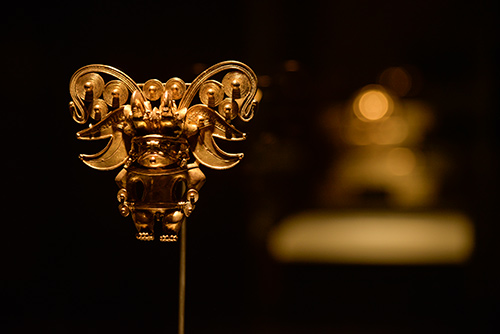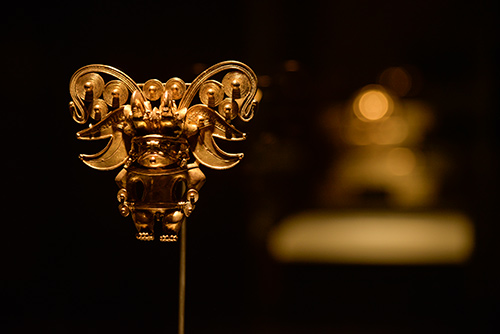During 2 days, visit legendary places and indigenous communities making you relive the tradition, customs and flavors of the Muisca culture.


This space exhibits millenary objects of the Muisca culture present in the Cundiboyacense highlands (Sopó, Guatavita, Tabio, Tenjo, and Ubaté); in the east (Choachí and the eastern hills of Bogotá); and in Boyacá (Tunja, Sogamoso, Duitama, Villa de Leiva, Tenza Valley, Ramiriquí and Turmequé).
One of the 7 sacred lakes for the indigenous community where they celebrated a ritual of handove power of a new cacique. Because of its symbolic and spiritual charge, the lake was epicenter of payment rituals which awakened Spanish interest during colonization. Ambition and stories about the legend of El Dorado generated its unsuccessful looting. A place of contact with the Muisca cosmovision and its relationship with nature, water and its rituals.
The Muisca community is still present in the territory and and welcomes the visitor stablishing contact forms with its customs, world view and tradition. An invitation to discover and enjoy the grastronomic wealth of the region.
In these two magnificent spaces, you will understand the colonizing process through the architecture of Villa de Leyva; it will also reveal the commercial relationship between indigenous and Spanish people. For its part, the Muisca solar observatory is a worship place to dimension the ancestral world view around the process of planting and harvesting guided by the sun (Sue).
In this scenario, you will find a wonderful collection of paintings, sculptures, tapestries, murals,
archaeological pieces and fossils. The name of this place alludes to one of the most important
artists of the country, recognized for his valuable contributions to national art since the first
decades of the twentieth century.
The foundation square of Sáchica keeps traces of the colonizing process; temporally and conceptually, several spaces will allow you to approach and transport to this period, in order to understand the dynamics of the evangelizing process in the area.